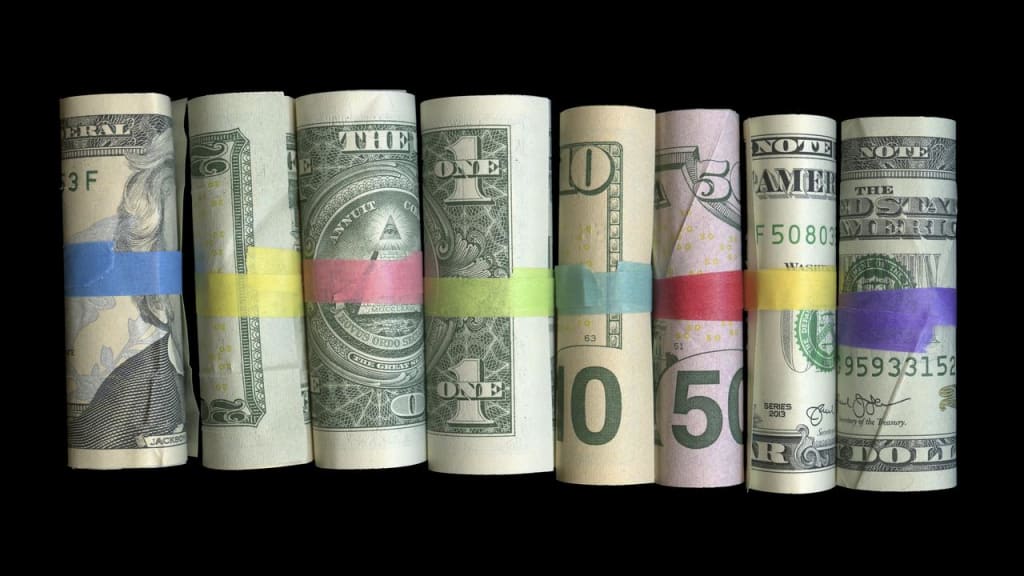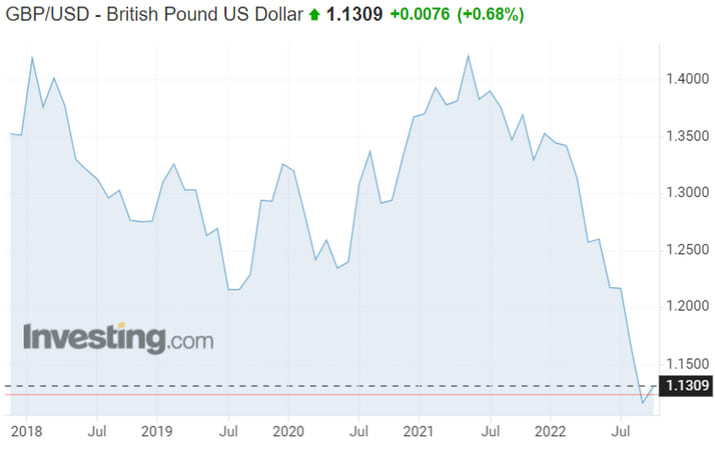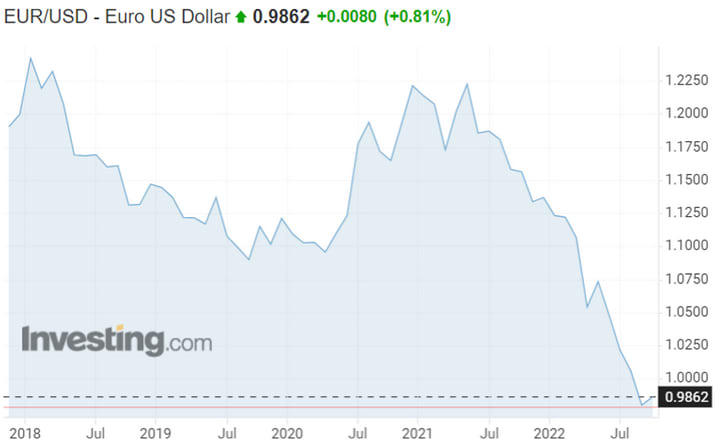Currencies: what is ahead?

With the global financial world in turmoil, the prices of different currency pairs have fluctuated strongly, due to changes in inflation and interest rates and growth forecasts between different countries and economic regions.
In particular, the values of the British
pound (GBP/USD) and the Japanese yen (USD/JPY) have fluctuated sharply against
the US dollar. The movements of the euro (EUR/USD) have also been significant
this year, although not as strong as the other two mentioned.
Fluctuations in currency pairs can be traded
on the Finnish stock exchange with Vontobel's leveraged products, which offer opportunities to seek returns with GBP/USD and
EUR/USD currency pairs.
The US dollar has been the winner of this
year's currencies, its value has risen against practically all currencies as
the threat of recession prevails around the world.
The British pound's collapse against the dollar from
last year's spring levels of over 1.40 to almost parity has been epic. Since
then, the pound seems to have found a local bottom, but this currency pair will
potentially offer the volatility that traders are looking for in the future as
well. GBP/USD is currently trading around the 1.13 level.
In addition to general uncertainty, the GBP/USD currency pair has recently been
rocked by Prime Minister Liz Truss's inauguration and subsequent quick
resignation after only 44 days. A successor to Truss has yet to be decided, but
the new appointment could potentially continue to affect the value of the pound
against the dollar.

In recent weeks, EUR/USD has traded at or below parity for the first time since 2002. The euro is particularly weighed down by concerns about economic growth as the region prepares for a difficult winter as the energy crisis threatens the whole of Europe.

The volatility of the market is hardly over by
this point, and as the world's largest financial market, currencies will also
offer opportunities for the pursuit of returns.
So what factors affect the fluctuations of
currency pairs? The following is a list of the most significant factors:
1. Differences in inflation
A consistently
lower inflation level typically correlates with a rising currency value. When
inflation is low, the purchasing power of the currency is higher. Countries
with high inflation typically experience currency depreciation relative to
other countries' currencies. High inflation is normally followed by higher
interest rates. If the government's inflation level is not particularly high, a
slight rise in inflation can give clues about the central bank's future rate
hikes, as we have seen this year when central banks around the world are
fighting rising inflation. Rising interest rates make domestic stocks and bonds
more attractive to foreign investors. In order for investors to buy them, they
must acquire more of that currency, and according to the laws of supply and
demand, the value of that currency will rise.
Rule of thumb: if Britain's inflation
level is consistently lower than the US, GBP/USD will rise, unless in a mild
inflationary environment the rise in US inflation indicates future interest
rate hikes by the FED.
2. Differences in interest rates
When making decisions on interest rates, central banks indirectly affect
both inflation and the currency market, and changing interest rates affect
inflation and currency values. Higher interest rates offer lenders higher
returns compared to other countries. As a result, higher interest rates
attract foreign capital and the domestic currency strengthens. However,
the effect of higher interest rates is mitigated if inflation in the
country is much higher than in other countries. The opposite relationship
holds with falling interest rates – in other words, lower interest rates
weaken the currency.
Rule of thumb: GBPUSD rises when
UK interest rates rise more than US interest rates (eg the Bank of England
raises rates and the FED doesn't).
3. Current account balance
The current account is the trade balance between a country and its trading
partners, which includes all payments for goods, services, interest and
dividends. A deficit means that the country spends more than it earns and
borrows capital from abroad. The country needs more foreign currency than
it gets from exports, and it supplies more of its own currency than
foreigners demand for its products. Excess demand for foreign currency
lowers the country's exchange rate.
Rule of thumb: EURUSD rises when
the current account balance between the euro area and the US increases for
the euro area.
4. Sustainability of public finances
Countries with large deficits and high levels of debt are less attractive
to foreign investors. A high level of debt leads to high inflation, and if
inflation is high, the debt is serviced and eventually paid off with a
weakened real currency. The government can "monetize" some of
its large debt burden, but increasing the money supply will inevitably
cause inflation. In addition to this, if the government is unable to
manage its deficit through domestic means (by selling domestic bonds,
increasing the money supply), it must increase the supply of securities
sold to foreign investors, which lowers their prices. Finally, a large
debt burden can be a worrying sign for foreign investors if they believe a
country is at risk of defaulting on its obligations. Foreigners are less
willing to own securities denominated in that currency if the risk of
default is high. For this reason, a country's credit rating is a
determining factor in its exchange rate.
Rule of thumb: GBP/USD rises
when the US public deficit/debt increases more than the UK deficit/debt.
5. Growth
Economic growth is always the best variable for measuring economic
well-being. Investors are attracted to countries with high GDP growth, as
this indicates higher future returns. Investors need more currency to buy
goods, services and securities, resulting in an increase in demand for
that currency.
Rule of thumb: EUR/USD rises when the GDP of the Eurozone grows more than
the GDP of the USA.
6. Labor market conditions
The health of the labor market is another variable for measuring the
well-being of the economy, as it is positively correlated with the GDP
growth rate. The unemployment rate, the wage level and the number of
unemployment benefits are the best indicators for assessing labor market
conditions, and investors tend to invest their money in countries with low
unemployment rates.
Rule of thumb: GBP/USD rises
when the UK unemployment rate is lower than the US.
If you believe the pound will strengthen
against the dollar, you can aim for returns with Vontobel's TLNG GBUS V9-Turbo, which at the time of
writing offers 7,5x leverage. If the pound strengthens by a percentage equal to
the dollar, Turbo's value will increase by 7,5 percent. If, on the other hand,
the pound depreciates by one percent, the Turbo produces a loss of 7,5 percent.
If your view is a weakening of the euro against the dollar, you can trade the TSRT EUUS V78-Turbo launched by Vontobel. At
the time of writing, its leverage is 11,8. If the euro weakens against the
dollar by one percent, Turbo generates 11,8 percent profit. If, contrary to
expectations, the euro rises by one percent, the loss of the Turbo position
will be 11,8 percent.
Risks
Legal notice:
This information is in the sole responsibility of the guest author and does not necessarily represent the opinion of Bank Vontobel Europe AG or any other company of the Vontobel Group. The further development of the index or a company as well as its share price depends on a large number of company-, group- and sector-specific as well as economic factors. When forming his investment decision, each investor must take into account the risk of price losses. Please note that investing in these products will not generate ongoing income.
The products are not capital protected, in the worst case a total loss of the invested capital is possible. In the event of insolvency of the issuer and the guarantor, the investor bears the risk of a total loss of his investment. In any case, investors should note that past performance and / or analysts' opinions are no adequate indicator of future performance. The performance of the underlyings depends on a variety of economic, entrepreneurial and political factors that should be taken into account in the formation of a market expectation.
